
General Information of Hagia Sophia
The Hagia Sophia is the silent witness of centuries on the same spot through the Roman and Ottoman Era.
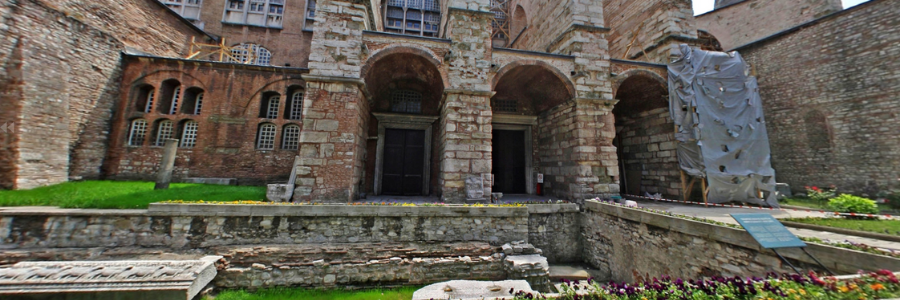
Entrance of Hagia Sophia and Earlier Basilica
As we stand at the entrance of Hagia Sophia, we can immediately observe the flying buttresses that conceal the west façade of the building

Outer Narthex
As we step into the outer narthex, a common feature in Byzantine church architecture, we are greeted with a space that was typically used for secondary religious services.

Inner Narthex and the Imperial Gate
As we step into the inner narthex, we are immediately struck by the stunning beauty that surrounds us.
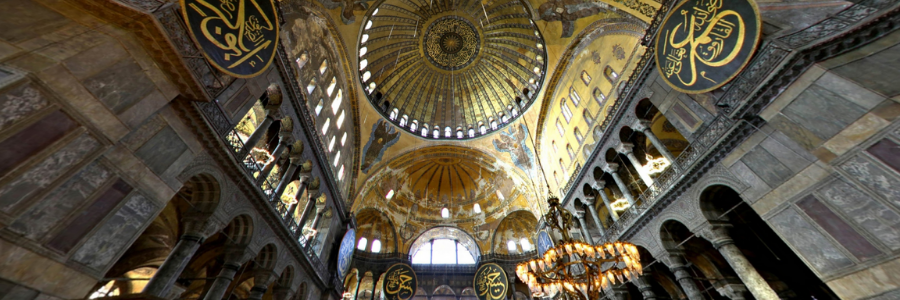
The Dome
As we walk through the Imperial Gate into the nave of Hagia Sophia, we are reminded of Procopius' awe-inspiring impression of the dome
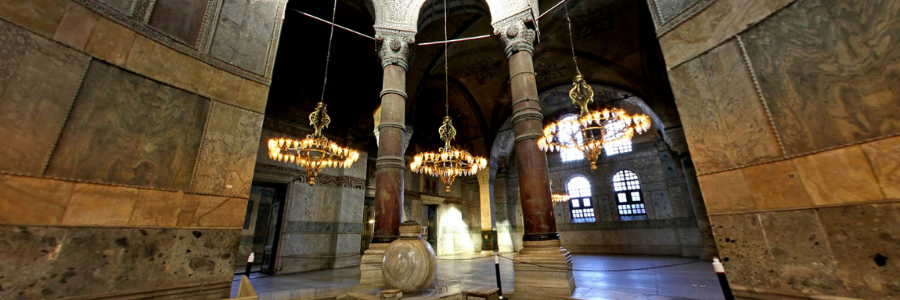
The Porphyry Columns
Upon entering the south aisle of Hagia Sophia, two reddish columns on white marble bases catch our attention.
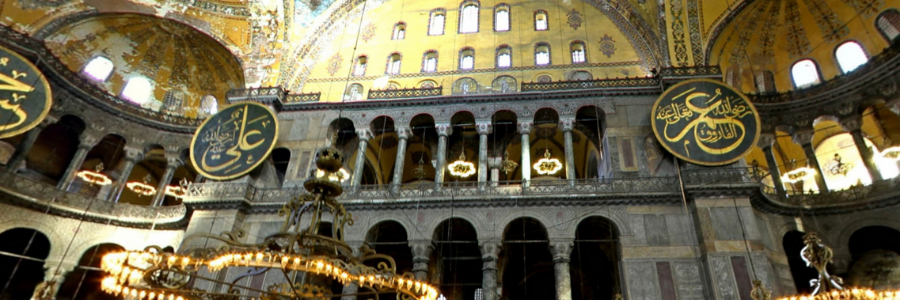
Marble Decoration of the Column Heads
As we walk down the southern aisle towards the central bays, we come across columns made of verde antico, a green marble quarried from Thessaly, Greece.
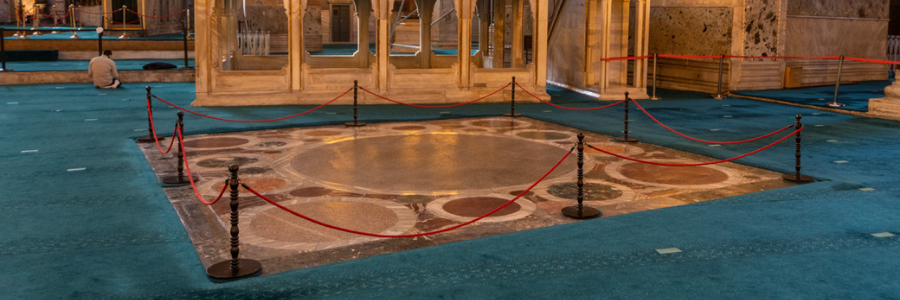
Omphalion
As we walk through the nave, we notice a large square in the opus sectile technique next to the central bay
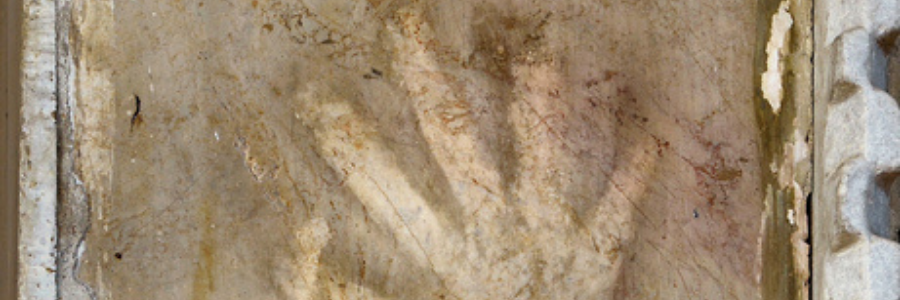
Mary´s Hand
As we continue our journey through the southeast bay of Hagia Sophia, we encounter some of the church's fabled history.
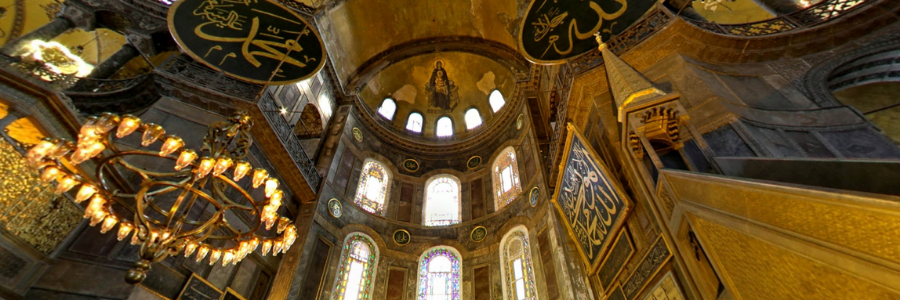
The Apse
We have now entered the eastern section of the nave, which was once the location of the church's apse.
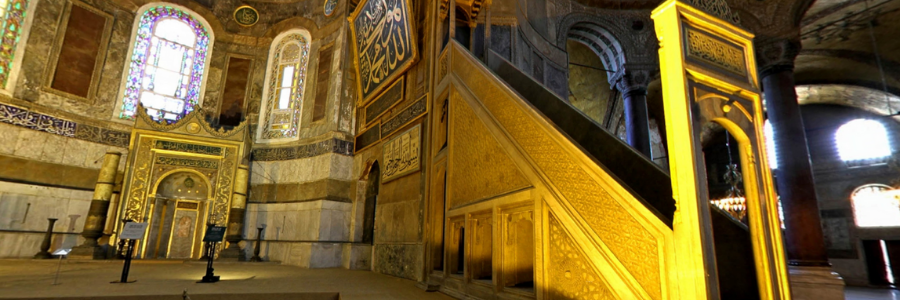
The Ottoman Additions
On May 29th 1453, the Eastern Empire, Byzantium, fell to the armies of the Ottoman sultan Mehmed II, almost 1,000 years after the Fall of Rome in 476 and the end of the Western part of the empire.
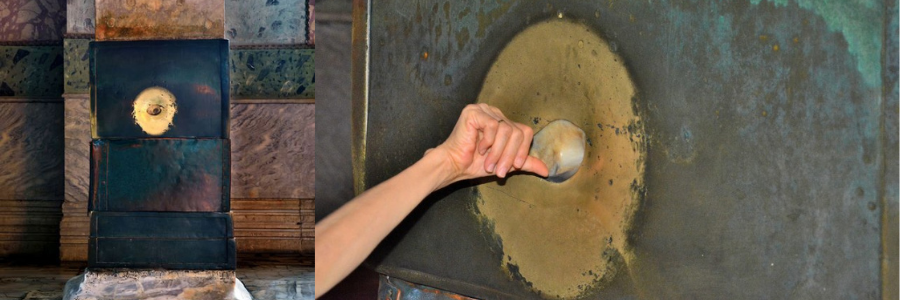
The Sweating Column
We arrive at a rectangular pillar situated in the northwest bay that appears unremarkable except for its bronze-covered lower half.

Vestibule of the Warriors
Exiting Hagia Sophia, we pass through the ‘Vestibule of the Warriors,’ a chamber located on the southern end of the narthex.
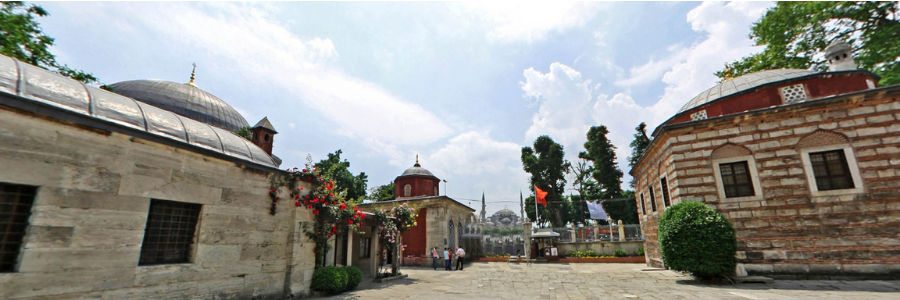
Outside of the Hagia Sophia
As we make our exit, we pass by a potential location for the Horologion, a mechanical clock that was once housed in a structure contributing to the fame of the imperial city.